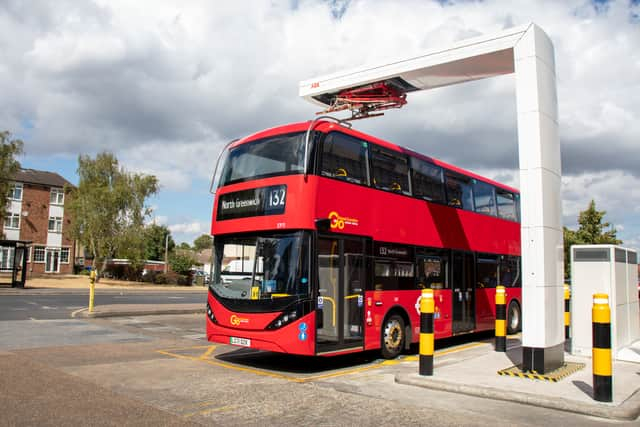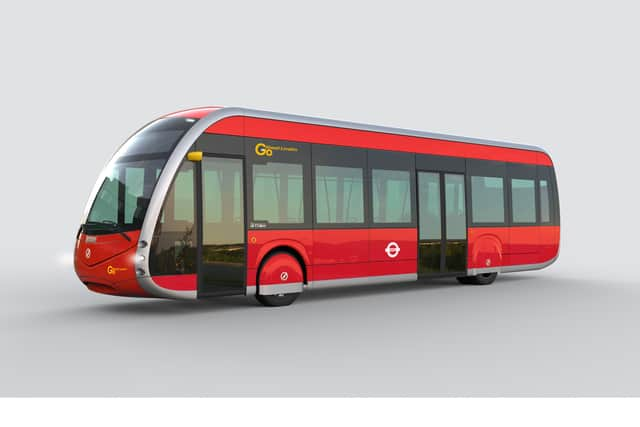Fleet of London buses get rapid charging technology as part of the capital’s journey to zero emissions
and live on Freeview channel 276
A fleet of electric buses in London have been fitted with new technology that will rapidly charge the vehicles as part of the capital’s journey to zero emissions.
The 18 double decker buses on the 132 bus route which runs from North Greenwich to Bexleyheath shopping centre, will now be able to use pantograph technology to top up at Bexleyheath Garage.
Advertisement
Hide AdAdvertisement
Hide AdA pantograph is an arm-like structure, which gives a rapid, high-power charge to the bus through its roof.


Each top-up takes less than 10 minutes, allowing buses to travel further each day.
It is the first time this technology has been used in the world, according to bus company Go-Ahead.
This is part of Transport for London’s (TfL) plan to deliver a fully zero-emission bus fleet in London by 2034.
Advertisement
Hide AdAdvertisement
Hide AdAt present over 850 of the capital’s 8,500 buses are zero emission.
Similar units are due to be rolled out to the 358 bus next year, when pantographs will be installed at either end of the 15-mile route linking Crystal Palace and Orpington, one of the longest in the capital - repeatedly charging the new single deckers throughout the day.


Irizar e-mobility will supply 20 ieTram buses for operation on route 358 sometime next year.
The deputy mayor for Transport, Seb Dance, said: “Londoners deserve to breathe clean air, and as part of our work to tackle the twin dangers of toxic air pollution and the climate emergency, I’m pleased that this new technology is being used on buses in south London.
Advertisement
Hide AdAdvertisement
Hide Ad“The introduction of the pantograph builds on the progress we have already made to run a cleaner and greener bus service.
“Transforming London’s bus fleet is an important part of the Mayor’s target of getting London to net zero by 2030, and his aim to build a better London – a fairer, greener and more prosperous city for all.”
Louise Cheeseman, TfL’s director of bus, said: “The threats of toxic air, climate change and congestion are becoming clearer every day, and it’s vital that we find technical solutions that help us run clean, green services that get Londoners where they need to be.
“When buses can travel further each day, as they do with this exciting pantograph technology, we can deliver the same service that Londoners rely on without increasing the number of buses and invest in other routes.
“The installation of the rapid pantograph charging for route 132 is a key step to help us get zero-emission buses running on routes all across London.”
Comment Guidelines
National World encourages reader discussion on our stories. User feedback, insights and back-and-forth exchanges add a rich layer of context to reporting. Please review our Community Guidelines before commenting.
